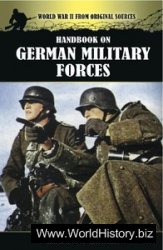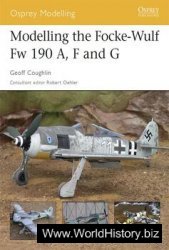The bulk of the Arab population in Palestine was led by Haj Amin el-Husseini, exiled Mufti of Jerusalem. His openly-declared purpose was to destroy the entire Jewish community of Palestine or to drive it into the sea. Born in Jerusalem in 1893, his active participation in the Arab nationalist movement dates from about 1919, and he led the anti-Jewish riots in Jerusalem in April of the following year, for which he was jailed by the British authorities. But the British High Commissioner at the time. Sir Herbert Samuel, attempted to appease the nationalists and to improve the balance of power between the rival Arab families by appointing him Mufti of Jerusalem in 1921. Husseini, however, made use of his new power to encourage an extreme policy: he took an active part in organizing the antiJewish riots in 1929, and headed the Arab Higher Committee that directed the 1936 rebellion. In 1937, the British dismissed him and outlawed his Committee, but he escaped to Damascus, from where he led the rebellion. In 1940, he moved to Iraq, where he took part in the pro-German coup of 1941, after the failure of which he escaped to Germany. At the end of the war, he made his way to Cairo, from where he began to organize the Arabs in Palestine once more. (After the Arab defeat in 1948, he was to remain in exile, primarily in Egypt and Lebanon, his influence waning rapidly until his death in exile in his late seventies.)
Most Arab villagers carried weapons and could be mobilized by the Faza’a, an Arab alarm system whereby each sheikh could call up the males in his district for an operation, whether for defence or attack, on a purely guerrilla basis. The Palestinian Arabs had two paramilitary organizations, the Najada and the Futuwa, which operated openly as scout movements.
Within their framework, a certain amount of urban guerrilla training was given to their members, but they were to be no match for the Haganah. They could, of course, rely on the backing of the local Arab population and benefited also from a loose co-operation with the Arab Legion and the Transjordan Frontier Force. From time to time, the Arab forces were able to make use of a number of deserters from British units: posing as British regular troops on duty and travelling around in stolen British Army vehicles, these were used to cross into heavily-populated Jewish areas in the cities, particularly Jerusalem, and introduce bombs, which created considerable damage and heavy casualties. Thus, of the three major attacks that succeeded in Jerusalem, two - the blowing-up of the Palestine Post building and the attack in Ben Yehuda Street in which some fifty people were killed and most of the area destroyed — were carried out by such deserters. The third attack was perpetrated at the Jewish Agency Headquarters by the use of a United States consular car, which was driven into the courtyard. (On the other side, when the war developed, a small number of deserters from the British forces joined the Haganah, in one case bringing the first tank, a Cromwell, to join Israel’s armed forces.)
The Mufti’s two guerrilla forces, known as ‘The Army of Salvation’, each about 1,000 men strong, were led by his cousin, Abd el Kader el-Husseini, and Hassan Salameh, who had undergone a certain degree of military training with the Germans during the war. Arriving in Palestine to begin the ‘jihad’ (‘holy war’), Abd el Kader began operations in the area of Jerusalem while Salameh became active in the Lod-Ramle district. To complicate the Arab military picture further, there existed in southern Palestine a radical and somewhat disorderly group of guerrillas organized by the extreme fanatical Moslem Brotherhood of Egypt, who maintained but a tenuous liaison with the other Arab parties. Backing these Arab forces was the military potential of the Arab world, which numbered several hundred aircraft in the air forces of Egypt, Syria and Iraq, plus British and French artillery and armour. In addition, they had ready access to arms, ammunition and spares, in contrast to the embargo that affected the Jewish forces.
As the date of the British withdrawal from Palestine drew near, the decision was taken by the Arab League that its member states would intervene militarily in Palestine. But the preparation for war against the infant Israeli state took place against a background of the inevitable inter-Arab differences, intrigues and manoeuvrings of the various rulers against each other. In April 1948, they appointed King Abdullah of Transjordan to be Commander-in-Chief of the invading armies: not only did he control the most effective of the Arab armies, the Arab Legion, but he also enjoyed the initial advantage of having part of his forces already in Palestine, within the framework of the British Army. This served to increase the other leaders’ suspicions of his motives, for there was little doubt of his desire to reunite the west and east banks of the River Jordan and create a Palestinian-Jordanian kingdom. There was always the possibility that he would enter into active co-operation with the Mufti of Jerusalem. In sum, the various Arab countries were more divided than
United, their common cause being limited to opposing Jewish settlement in Palestine, and the creation of a Jewish state. It was a pattern that was to continue over the years.
By far the most effective and best-trained Arab force was the Arab Legion, commanded by Lieutenant-General Sir John Bagot Glubb (better known as ‘Glubb Pasha’), a veteran of the First World War. Fluent in Arabic, he and a group of British officers had transformed the Legion from a desert frontier force into a modern army. His total identification with the highly-individualistic Bedouin tribesmen and his personal authority had helped to create a formidable force by applying British discipline and organization to the inherent qualities of the Bedouin. The Legion at that time comprised over 10,000 troops organized in three brigade groups, a number of armoured battalions and artillery elements. The Egyptian Army was nominally the strongest of the Arab armies and was prepared to commit an expeditionary force of some 5,000 troops, consisting of a brigade group with an armoured element. In the north, the Syrian force numbered 8,000 troops, in two infantry brigades with a mechanized battalion of French-built tanks, and a small air force. The 2,000-man Lebanese contingent allocated to the Palestine operation included four infantry battalions with limited artillery and armoured forces, while the Iraqi Army assigned 10,000 men — four infantry brigades, an armoured battalion and supporting troops, in addition to an air unit.
In order to offset the danger, as they saw it, created by King Abdullah’s ambition and his military potential, the kings and presidents of the Arab countries also decided to create an Arab Liberation Army, which would operate in Palestine even before the evacuation of the British. To lead this force, they appointed General Taha A1 Hashimi of Iraq, but he proved little more than a figurehead; the real leader of the force, which ultimately came to be identified with his name, was a former Syrian officer of the Ottoman Turkish Army, Fauzi el-Kaukji. He had been a leader of the Arab irregulars during the 1936 revolt in Palestine, and had led the Arab guerrilla forces based on the area of Nablus. Although a most disorganized commander administratively, he had shown qualities of leadership and courage — in addition to certain flamboyant characteristics bordering on the theatrical, which gave him the reputation of being something of a clown. (From a purely professional military point of view, his performance in the 1948 war was to be mediocre, to say the least.)
Thus, the Arab armies that were to invade Palestine, in addition to the crack Transjordan Arab Legion, Kaukji’s Arab Liberation Army and the Mufti’s Army of Salvation, were: the armies of Lebanon, Syria, Egypt and Iraq; contingents from the Saudi Arabian Army were subsequently attached to the Egyptian expeditionary force. All these various elements co-ordinated their activities to a degree, while at the same time pursuing their individual partisan aims — a situation that did not always allow for effective military control over, and co-operation between, the 30,000-plus troops committed to the invasion. Well-equipped by 1948 standards with small-arms, artillery, armoured and air elements, and well-organized in
Conventional modern military terms, they nevertheless made a striking contrast to the Israeli forces — a proportion of which had only small-arms, and in which no artillery, armour or air units of any consequence existed whatsoever. Such were the very unevenly matched forces that were ranged one against the other at the outset.
Attempts have been made by Arab historians to portray the situation as one in which the military advantage lay with the Jews because of interior supply lines and a flexible mobilization system. But the first of these assumptions ignores the fact that all the Jewish lines of communication were highly vulnerable because of a large, armed, hostile population sitting astride them. The second assumption misses the fact that the bulk of the Arab forces were regular military organizations equipped with conventional modern military weapons of the time. The Jewish loss of one per cent of its population is perhaps the best indication of the intensity of the struggle and its one-sided nature. Ranged against professional Arab armies was a civilian population fighting as a militia. The avowed and openly proclaimed purpose of the Arab forces was to drive the Jewish population into the sea: the new Jewish state found itself fighting a war for its very existence — a war that was to become its War of Independence.




 World History
World History









